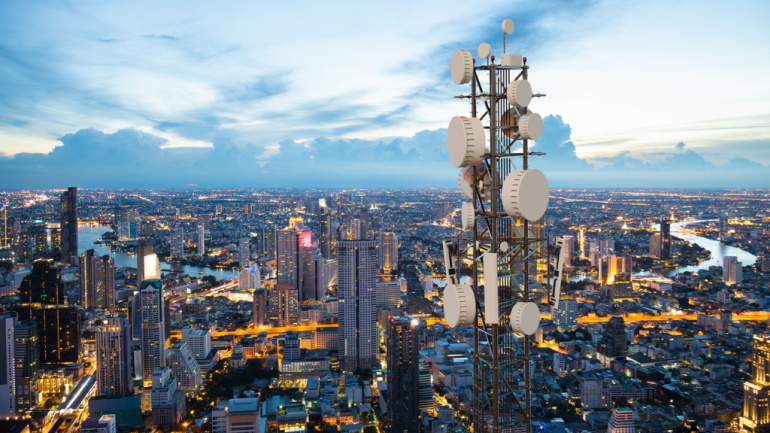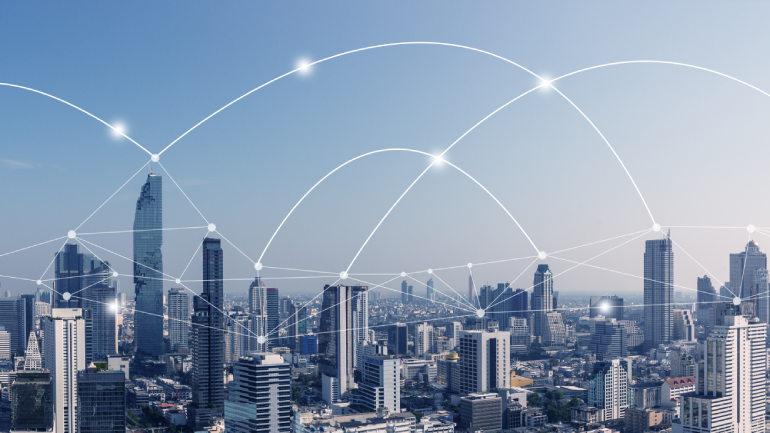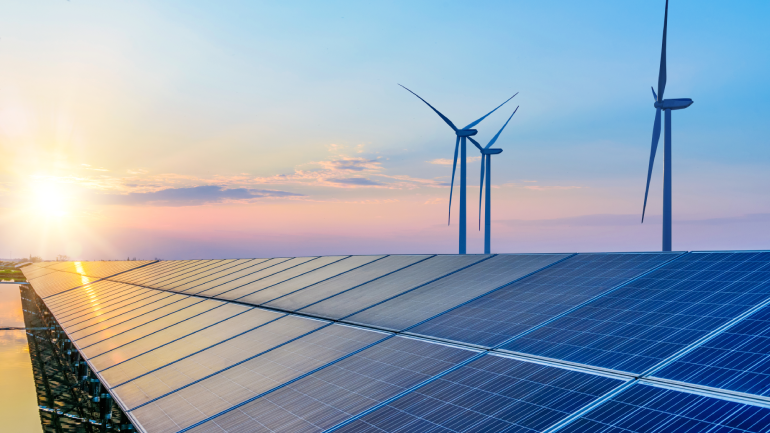China Mobile and Ericsson have announced the launch of two energy-efficient 5G sites in China as part of their efforts to conserve energy and reduce carbon emissions. The Ericsson Smart Site offers new levels of quality assurance, the intelligent administration of various energy sources, full-stack real-time monitoring, and intelligent energy and service synergy. The initial facility, located in Jiangsu Province, runs on the 700MHz frequency and emits no carbon dioxide. The second facility, in Guangdong, operates on the 2.6GHz frequency. Both locations employ Ericsson’s power system, which optimizes the usage of energy from solar, grid and battery sources to provide the most energy-efficient operation possible. The systems also include remote management capabilities using Ericsson Network Manager. Energy conservation and renewable energy have become major technology trends in China. As China continues to prioritize energy conservation and carbon emission reduction, the partnership between China Mobile and Ericsson is well-positioned…
The UK government has announced a £110 million investment in research and development for next-generation wireless technology and telecoms security, with a focus on 5G and 6G. This investment is intended to enhance the UK’s position as a global leader in telecoms research and development. As part of this investment, three top UK universities – the University of York, the University of Bristol, and the University of Surrey – will each receive £28 million to collaborate with major telecoms companies such as Nokia, Ericsson, and Samsung to develop and create future networks such as 6G. This follows Ericsson and Samsung’s recent announcement to establish 6G research labs in the UK. The investment will also aid in the deployment of ultrafast 5G by making it easier for new companies to enter the market. The universities will work with world-class UK academics and industry players to ensure that future network…
According to the GSMA’s most recent report on the state of the mobile sector in Europe, challenging market circumstances will have a detrimental influence on 5G adoption, with Digital Decade targets endangered by slower 5G deployment compared to rival global markets. The GSMA noted that 34 European markets had 5G service available as of the end of June 2022, with 108 providers providing commercial services and a user adoption of about 6%. Norway has the highest rate of 5G adoption at 16%, although there is also growth in Switzerland (14%), Finland (13%), the UK (11%) and Germany (10%). According to the Association, average 5G penetration will reach 44% by 2025, with the United Kingdom and Germany predicted to lead with 61% and 59% respectively. Nevertheless, GSMA researchers observed that even these nations were likely to lag behind global counterparts such as South Korea, which is expected to have…
T-Mobile US has begun offering commercial Voice-over-5G (also known as Voice over New Radio, or VoNR) in certain regions of Portland, Oregon, and Salt Lake City, Utah, with the intention of expanding the service to a larger area later this year. VoNR, which is based on 5G Standalone (5G SA) network technology, is now available on the Samsung Galaxy S21 5G smartphone and will be available later this year on a variety of additional 5G handsets, including the Galaxy S22. Voice over 5G represents a significant hurdle for the whole wireless industry, however all US providers will most certainly want to transition voice calling to 5G at some point in the future to free up LTE spectrum for 5G. Voice conversations via 5G offer decreased latency, lightning-fast speeds, real-time response and immense connectivity. Ericsson, Nokia, Samsung and Qualcomm all contributed to TMUS’s voice over 5G service debut.…
BT and Ericsson have launched a new cooperative venture in which the two companies will collaborate to deliver private 5G networks to Industry 4.0 clients. The details of the multimillion-pound arrangement have not been released, although it is reported that the partnership duration is to be for several years. Under the terms of the agreement, BT will use Ericsson technology to provide private 5G networks to partners in a variety of industries, including manufacturing, healthcare, and transportation and logistics, with a focus on enabling valuable solutions such as asset tracking, predictive maintenance and automation. Asset tracking, predictive maintenance, networked sensors, real-time data processing, automation and robots are among the industry 4.0 solutions promised. The actual implementation may vary depending on the environment, but the private 5G network, which enables all of these use cases with low latency connectivity, is the main selling point. Katherine Ainley, CEO Ericsson…
The successful demonstration of renewable energy sources in a 5G mobile site has been confirmed by Deutsche Telekom and Ericsson. Both companies collaborated to convert a live radio station utilizing a management system to optimize power supply and demand by leveraging solar and wind energy. The site in Dittenheim, 120 kilometers north of Munich, has been partially powered by solar panels for over a year as part of a prior collaboration between the two enterprises. Wind turbines have now been installed as part of a new trial to increase the site’s renewable energy capability. Acting as a second renewable energy power source, the wind turbine is capable of providing up to 5kW of additional electricity. When the conditions are ideal, the facility may run entirely on renewable energy, eliminating the requirement for use of the electrical power grid. The Ericsson Power System, which handles the two power sources…
NTT DOCOMO and NEC Corporation have launched a proof-of-concept (PoC) testing to run NEC’s 5G core network service in a hybrid cloud environment that leverages the Amazon Web Services (AWS) cloud using end-to-end cloud-native network architecture. Through the PoC, DOCOMO, NEC, and AWS expect to prove the viability of cloud-native mobile networks leveraging a public cloud for network function virtualization (NFV). The PoC will validate the energy efficiency and high performance that AWS Graviton2 processors can bring to NEC’s 5GC in the AWS cloud to achieve an energy-performance advantage over comparable solutions. As the first step, 5GC network functions will run in the cloud on AWS infrastructure and corresponding 5GC network functions will reside on DOCOMO’s on-premises infrastructure to verify availability and operational feasibility. The second step will deploy the 5GC network function on AWS Outposts (on Amazon EC2 compute instances powered by Graviton2 processors) on DOCOMO’s premises. AWS…
Oracle Communications has been chosen by Vodafone UK to lead the network policy for its standalone 5G network. Vodafone will be able to make more intelligent policy decisions and swiftly test and deploy new services using Oracle’s cloud native network policy management technology as part of its 5G core. Customers will be able to get their hands on exciting new 5G options sooner, thanks to this new agreement, which includes holographic calls, lag-free 5G game streaming and film downloads up to 4X faster than 4G networks. The solution, which is comprised of Oracle’s 5G Core Policy Control Function (PCF) and Policy and Charging Rules Function (PCRF), enables the implementation of sophisticated network policies across wireless, fixed and cable networks, as well as IoT and machine-to-machine (M2M) networks. In the case of Vodafone, the solution will provide data from which Vodafone customers may select the optimal network offer…
Qualcomm Technologies has developed a drone platform with an artificial intelligence and 5G-based reference architecture. The Qualcomm Flight RB5 5G platform aims to speed up the growth of commercial, corporate and industrial drones. The Flight RB5 5G Platform is designed to serve as a foundation for commercial, enterprise and industrial drone development, assisting organizations in successfully capturing and processing data from drone cameras. The new 5G platform combines several complicated systems into a closely connected drone system. Mapping, inspection, film and entertainment, military, security and emergency response and delivery are some of the use cases for this technology. The platform, which is powered by the Qualcomm QRB5165 processor, expands on Qualcomm Technologies’ most recent solutions for the Internet of Things (IoT), delivering a solution that will power the next generation of high-performance, low consumption 5G drones. AI and machine learning are key to the platform, assisting in the…
Swedish vendor Ericsson has signed an agreement to provide a 5G “core” to Virgin Media O2, a new company established by a merger between Virgin Media and the mobile operator O2. Ericsson will build a VMO2 standalone 5G core, that will incorporate 4G and non-standalone 5G cores, to create dual-mode 5G core, as referred to by Ericsson. The vendor has been a supplier to mobile operator O2 UK for quite some time now. The previous deal between the two companies focused on an ongoing “network modernization program” that was introduced in June 2020. Since the older core used by O2 was also that of Ericsson, it was appropriate to continue with the same technology vendor. Moreover, the new agreement also allows Virgin Media O2 to provide a standalone 5G service. UK operators have based their 5G launches on a “non-standalone” architecture that allows the 5G RAN to revert…













